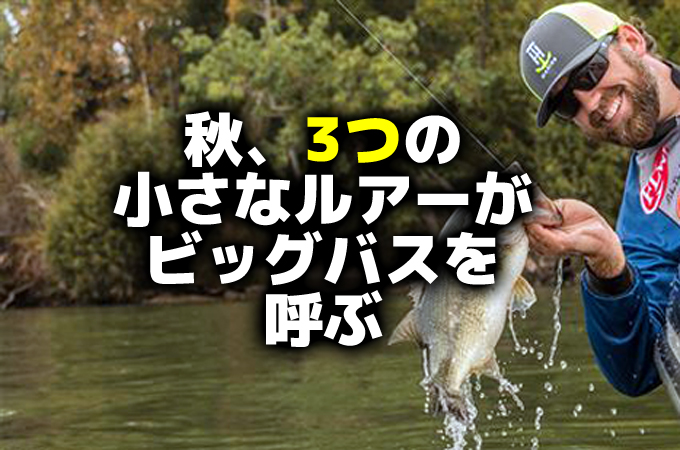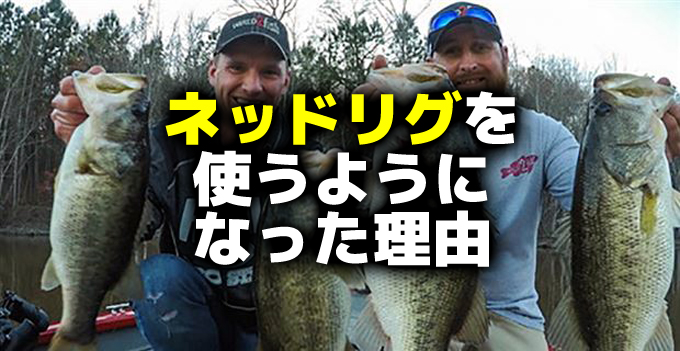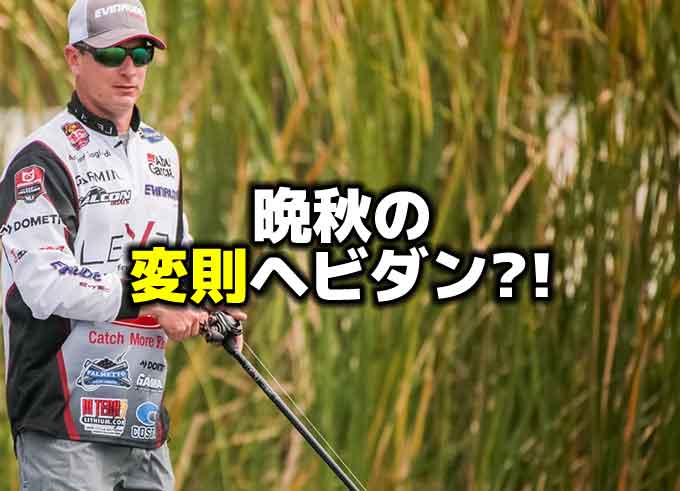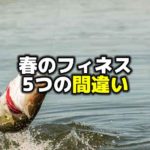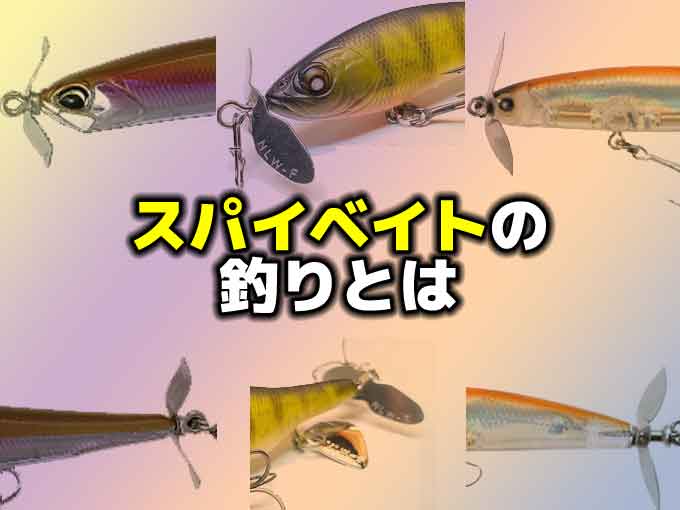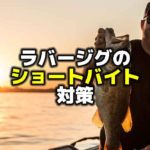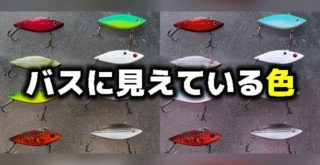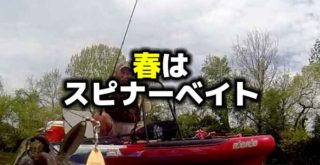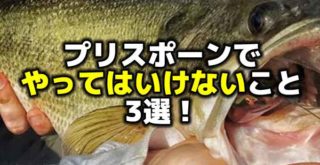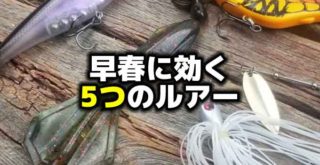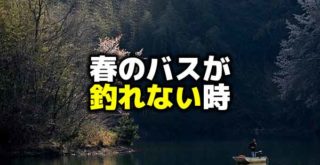夏の良い岬の見つけ方
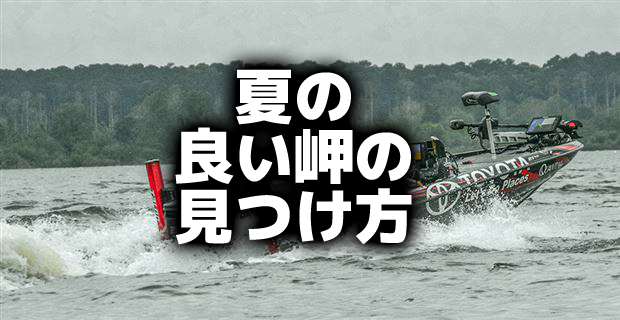
Photo by scout.com
こんにちは!店長の小山です!
本日は海外サイトより、”Finding Productive Summertime Points”という記事を引用してご紹介いたします。
引用先:scout.com”Finding Productive Summertime Points”By Luke Stoner – Jul 13(海外サイトです)
バスフィッシングをする方なら誰もが大好きなポイントのひとつ、「岬」。
バス釣りの雑誌なんかを見ていますと、よく季節ごとのねらい目ポイントとして岬が挙げられていますが、「春はコンタクトポイントである岬がいい」「夏は水通しの良い岬がいい」「秋はベイトフィッシュの通り道になる岬がいい」「冬はディープが近い岬がいい」などと1年中、岬を狙えと書いてありますよね。
それほど、バス釣りにとって外すことのできないエリアのひとつが岬ということなのですが、果たして、岬だったら全部同じということで良いんでしょうか?
この記事は、2度のアメリカバスマスター・アングラーオブザイヤーに輝いたジェラルド・スウィンドル氏が、「夏」という季節に焦点を合わせ、ひとつの湖の中でも数ある似たような岬のなかからベストな岬を見つけ出す方法を解説してくれています。
ちょっと読んでみましょう。
流れを考える
While there are several factors that potentially contribute to which point, and where on a point a bass sets up, Swindle explained without hesitation the most critical component to a productive point in the summer months is finding the current.
“The number one thing I look for when fishing points in the summertime is current,” Swindle said. “Whether it is a lake that has current generated by a dam, or current that’s generated by the wind, you always want to find current. The points with an ample amount of current will hold active fish and are a good place to start in the summer.”
Instead of focusing on the bottom composition of a point or how much cover a point has on it, Swindle dictates his point fishing almost exclusively off of current throughout the summer.
“Point fishing in the summer is different than any other time of the year,” Swindle said. “And that’s because current becomes the driving force in the heat of the summer. Current affects how the baitfish and bass set up on structure, when they’ll bite, and even if the fish will bite at all.”
Many anglers, myself included, get wrapped up in thinking they can specifically pattern the type of point they have caught bass on. We think that some days bass prefer long, slowly tapering points while other times bass load up on steep points with sharp drops.
Swindle doesn’t follow this logic, however, and treats every point uniquely. What Swindle is concerned with is where, and with how much velocity current is hitting a point.
“In the summertime I focus on the most obvious places,” Swindle said. “There may be 100 points in a row on a lake but three of them stick out slightly farther into the main lake, or they are a little taller, or maybe the old river channel gets a little closer to them. Essentially they are the points the current hits the hardest on. Those are the type of places that are liable to hold a school of bass. Whether the slope of the point is steep or it slowly tapers off doesn’t make or break a spot for me—the current does.”
Although Swindle uses Humminbird Lake Master contour maps to find opportune points to focus on, figuring out how the current lays on a specific point is something Swindle urges anglers to do with their eyes and common sense.
“It sounds simple but I always tell anglers to look with their eyes before their electronics,” Swindle joked. “Understanding how current comes across a point is not something you can learn by staring at your graph. Look to see if the point turns up into the current, or is facing away from it. Pay attention to where/if you see any slack water eddies around the point, or where you see the water moving the fastest. These are all clues that’ll help you zone in on where the bass should be holding.”
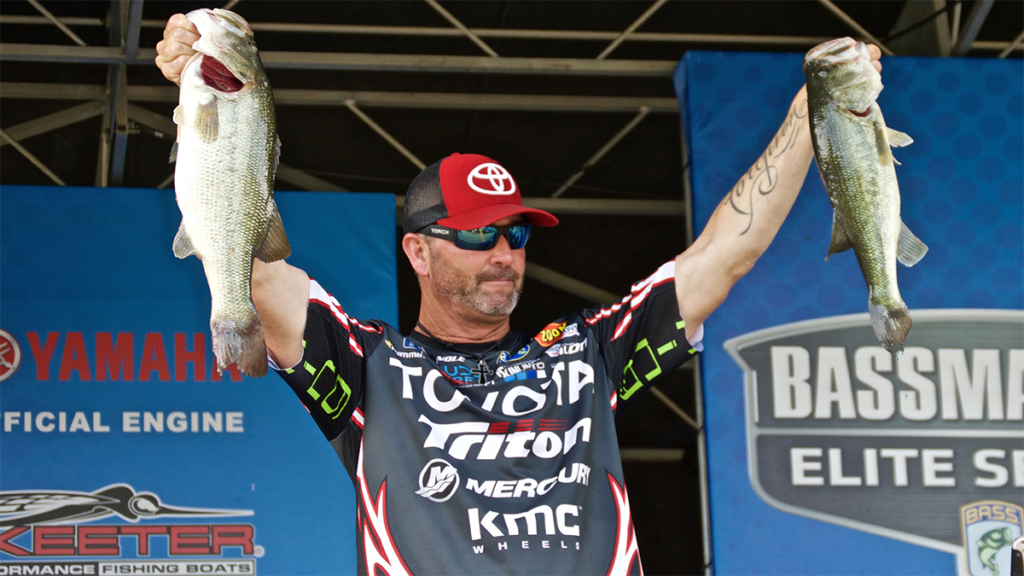
Photo by scout.com
スウィンドル氏は迷わず、夏の岬にとって最も重要な要素は流れを見つけることだと説明しました。
「夏場の岬で釣りをするときに考えることはただひとつ、流れです」とスウィンドル氏は語った。「湖ではダムの放水によって生まれる流れであろうと、風によって生まれた流れであろうと、常に流れを探したいと思っています。十分な量の流れを持つ岬は活性の高いバスの魚影が濃く、夏はそこからスタートするべきです。」
岬はボトムの質に焦点を当てるのではなく、岬にどれくらいのカバーがあるかでもなく、スウィンドル氏は夏に岬を釣る場合はおもに流れのことだけを考えると言っています。
「夏の岬の釣りは、他の季節とはちょっと違うのです」とスウィンドルは語った。 「なぜなら、流れは暑い夏の中において原動力になるからです。流れは、地形変化にベイトフィッシュとバスがどのようについているか、いつバイトするか、そして全部で魚がどれくらい釣れるのかにも影響を与えます。」
多くの釣り人は、特定の岬でバスを釣ったことによってその岬のタイプを分けてパターン化しようとします。ある日は長く緩やかに先が細くなる岬にバスがいて、他の時は尖っていて急激に落ち込む岬にバスがいると考えます。
しかし、スウィンドル氏はこの論理に従わず、あらゆる岬をすべて同じに扱います。スウィンドル氏にとっては、岬に対して流れがどれくらいの速さで、どこに当たるかのほうが、どれほど重要なのかということです。
「夏になると、私は最もわかりやすい場所に集中しています。 湖には多くの岬があるかもしれませんが、そのうちの3つはメインレイクのほうにわずかに遠くへ突き出ていたり、少し背が高くなっていたり、リバーチャンネルに近くなっています。基本的にそれらは、流れが最も強く当たる岬のはずで、バスの魚影が濃い傾向がある場所のタイプです。岬の勾配が急であるか、それとも徐々に落ちていくのかに関わらず、流れがそこに当たっているかどうかで、場所を決めます。」
スウィンドル氏は、Humminbird Lake Master(魚探)の等高線マップを使って焦点を合わせるべき適切な岬を見つけ出しますが、流れがどのように特定の岬に結びついているかを把握するためには、スウィンドル氏は釣り人にもっと目で見るべきだと促します。
「シンプルなことすが、私はいつも釣り人に魚探の前に目を向けるように言います。 」スゥインドル氏は冗談めかします。「湖流がどのように流れているかを理解することは、魚探の画面を見つめて学べることではありません。流れが岬に対しどう当たって、どう流れていくかを見てください。岬の周りにゆるい反転流が見える場合や、水が最も速く動くのが見える場所に注意してください。これらは、バスの魚影が濃いゾーンを特定するのに役立つすべての手がかりです。」
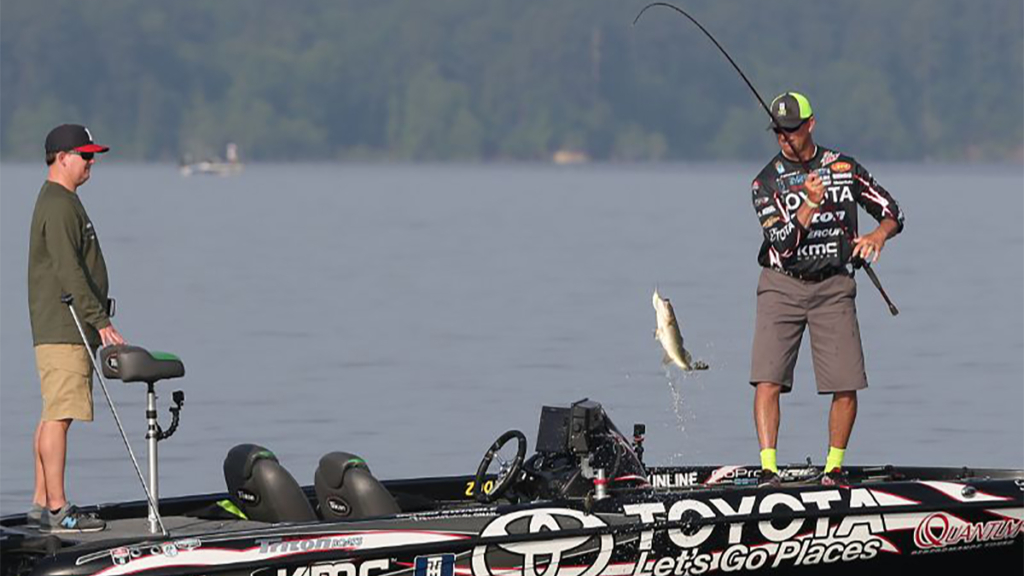
Photo by scout.com
ベイトをパターン化すれば、バスもパターン化できる
After Swindle has found a prime point and has formed a mental game plan of how the current lays based on his visual clues, he employs his Humminbird electronics.
“More so than looking for stumps or individual bass I am looking for bait,” Swindle said. “If I idle 10 points and I notice all the baitfish are out suspended off the deep edge of a point, I know there probably isn’t a lot of current being pulled and the bass probably aren’t feed too aggressively. If all the points I idle and graph look like this, it tells me I need to slow down and fish fore individual bass until the baitfish reposition.
“Conversely, if I graph those points and all the bait is positioned right on top of the drop, I know the water is pulling across these points and there is a good likelihood the bass are eating. My depth finder allows me to pattern the baitfish, which is turns helps me pattern the bass.”
Not only does the specific location of a point he focuses on change based on the position of the baitfish; Swindle’s bait selection changes, too. While nothing in fishing is a perfect science, patterning baitfish on a summertime point allows Swindle to be more time efficient.
スウィンドル氏が視覚的な手掛かりにより重要な岬を見つけて、流れをどのように活かすかというゲームプランができた後に、彼は魚探を使用します。
スウィンドル氏「スタンプや個々のバスを探しているよりもむしろ、私はベイトを探しています。 10の岬に魚探を掛けたとして、ベイトフィッシュが岬のディープエッジから離れてサスペンドしているようなら、おそらく多くの流れに影響されておらず、バスもあまり積極的にフィーディングしていないと理解します。私が釣ろうとしているすべての岬で魚探にこのように写る場合、私は、ベイトフィッシュの位置が変わるまで、スローダウンして個々のバスを釣る必要があると自分に言い聞かせます。
逆に、もし私がこれらの岬を見て、ベイトがブレイクの上に乗っているならば、水流が岬を横切ってベイトが引っ張られ、バスがフィーディングしている可能性が高いと理解しています。私は魚探でベイトフィッシュの状態をパターン化し、それをバスのパターンに転用するのに役立たせています。」
彼はベイトフィッシュの位置に基づいて釣るべき岬を変えていくだけでなく、ルアーの選択も変化します。完璧な科学的根拠はありませんが、夏期にベイトをパターン化することで、スウィンドル氏の時間をより効率的にすることができます。
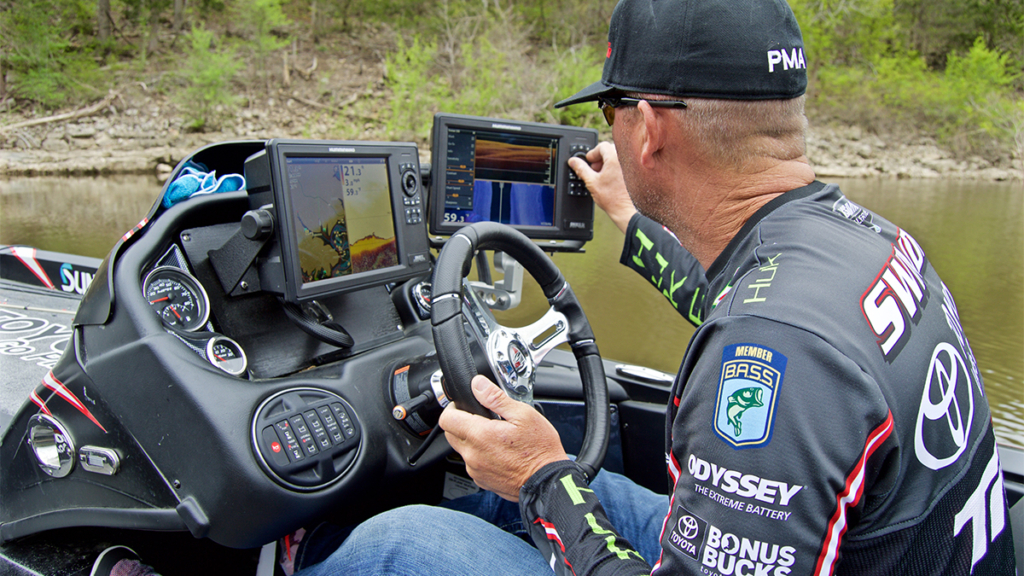
Photo by scout.com
夏の岬のルアー3点
Deep-diving crankbait
If Swindle is confident there is a lot of current and active baitfish on a summertime point he will first look to dredge the bottom with a deep diving crankbait. Preferably something that will dive to the 15 to 25-foot range.“First things first you are going to need a deep-diving crankbait,” Swindle said. “My go-to is either a Rapala DT20 or Strike King 6XD for that 15 to 20-foot depth zone. If I am targeting a point any deeper than that, I like to go with a Strike King 10XD. These big plugs throw relatively easily and will truly get down to the depths you need to be targeting.”
3/4-ounce ballhead jig
If Swindle is faced with little to no current scenarios and he sees the bass are scattered around the structure, he opts for a lure he can maintain bottom contact with.“A 3/4-ounce Buckeye Lures G-Man Ballin’ Out Jig is my next choice,” Swindle said. “Any old football or round ball head jig will work, but we just came out with the Ballin’ Out Jig and it’s been performing great. It has a little more of a finesse jig look and feel as far as heavy jigs are concerned and is something I’ve caught bass all over the country on. I just let it keep contact with the bottom, either dragging it or hopping it off the bottom.”
10-inch worm
Swindle’s final go-to lure for point fishing during the summer months is another old reliable presentation that produces for him whether there is current or not.“Lastly, a 10-inch Zoom Ol’ Monster worm is something I always have tied on,” Swindle said. “No matter where I am fishing in the summer, a 10-inch worm is simply hard to beat. I use to only fish it on a traditional 1/2-ounce Texas rig but nowadays I spend about 50 percent of the time throwing it on a Buckeye Lures Magnum Series Spot Remover shakey head. Weight-wise, I use either a 1/2-ounce or 3/4-ounce depending on the depth I am fishing and how strong the current is.”
ディープダイビングクランクベイト
スウィンドル氏は、夏期の岬に多くの流れおよび活発なベイトフィッシュがいると自信を持っていれば、ディープダイビングクランクベイトで底を叩くことをまずやっていきます。好ましくは4.5~7.5メートル潜るもの。
「まず、ディープダイビングクランクベイトが必要になる」とスウィンドル氏は話す。 「ラパラDT20またはストライクキング6XDで4.5~7メートルの深さのゾーンを通します。もしそれより深い岬を狙っているなら、ストライクキング10XDを使うのが好きです。これらの大きなプラグは比較的容易に投げることができ、目標とする深さをしっかりと通せます。
3/4オンスのフットボールジグ
スウィンドル氏が岬に当たるいい流れをまったく見つけられず、バスがストラクチャーの周りに散らばっているのが見える場合、彼はボトムコンタクトを維持できるルアーを選びます。
「3/4オンスのBuckeye Lures G-Man Ballin’ Out Jigは私の次の選択だ」とスウィンドルは語った。 「以前からあるフットボールやラウンドヘッドのラバージグでも使えるが、Ballin 'Out Jigが出てきて、素晴らしいパフォーマンスを出しています。それは、ヘビージグでありながらフィネスジグのような外観や使い心地を持っており、これにより私は全国でバスをキャッチできたと思っています。常にボトムコンタクトをさせつつ、ズル引きするか、ボトムから跳ね上げるかのどちらかで使っています。
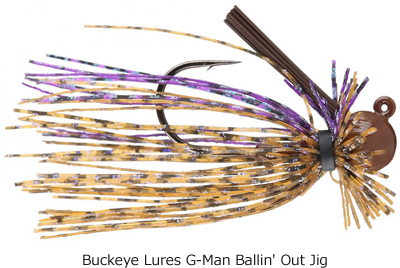
10インチワーム
夏の間、岬の釣りのためのスウィンドル氏の最終的なルアーは、流れがあるかどうかに関わらず彼が信頼する昔からのプレゼンテーションです。
「最後に、10インチのZoom オールドモンスターワームは、私がいつも用意しているものです。 どんな場所であろうとも、夏には10インチのワームは重要なものです。私は伝統的な1/2オンスのテキサスリグで釣っているだけですが、最近はおよそ半分はBuckeye Lures Magnum Series Spot Remover shakey headで投げています。シンカーは、釣っている深さや流れの強さによって1/2オンスか3/4オンスのどちらかを使います。」
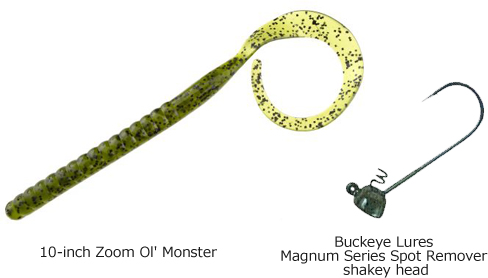
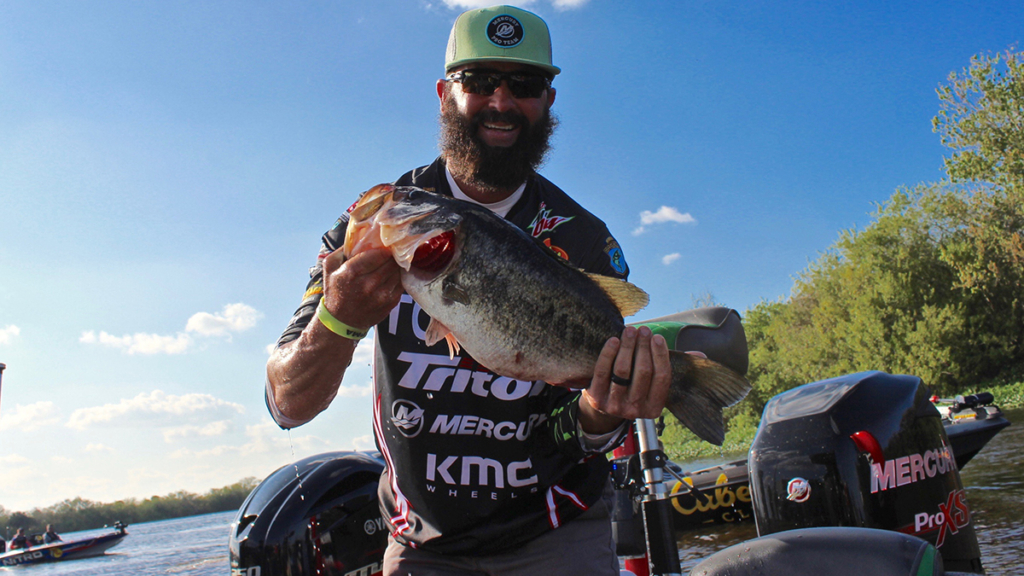
Photo by scout.com
いかがでしたか。
あくまでも夏というくくりの中での話ですので、そこは間違えのないようにしたいところではありますが、これほどまでにボトムの質やカバーの量にこだわらず、流れが当たっているかどうかだけを見ているとは思いませんでした。
それから、湖の全体を目で見て、流れを読んでからそこで初めて魚探を掛けるという順番も、広大なアメリカならではだなと思います。そうしないと本当にたくさんの岬や地形変化があり過ぎて、時間がいくらあっても足りないのでしょうね。
使うルアーもかなりアメリカンというか…豪快ですね(笑)アメリカのトーナメントではこれくらい強気なルアーに食ってくるようなバスがいない場所はやる価値がないということなのでしょうか…。すごいところです、アメリカという国は。最高ですよね。
さて、もし夏のバスを見つけるのが苦手な方でしたら、この記事で説明されているヒントを使ってみてはいかがでしょうか。多少、日本のフィールドに合うようにアレンジは必要かもしれませんが、スウィンドル氏が言うには多くの岬の中の3つだけ選べばいいということですから、これで苦手が克服できるかもしれませんよね!
私も自分のよく行くフィールドのことを思い出し、作戦を練ってみようと思います。
それでは、また。
毎度ありがとうございます!





